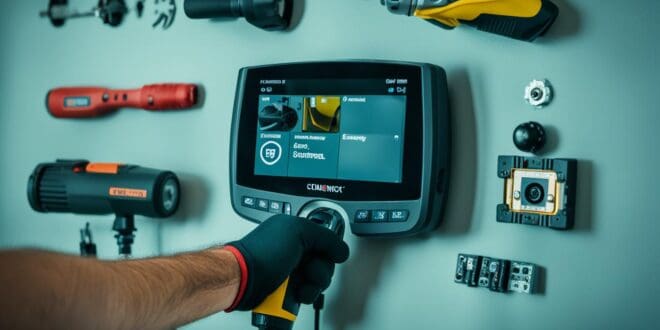DIY home security systems offer an affordable and customizable solution for homeowners looking to protect their properties. Whether you’re concerned about break-ins, fire, or other emergencies, a DIY system provides peace of mind and puts you in control of your home’s safety.
With a DIY home security system, you have the freedom to choose what components to include and can easily add or change them as needed. This level of customization allows you to tailor the system to your specific needs and budget, ensuring you get the most efficient and cost-effective solution.
Installation is a breeze with a DIY system, eliminating the need for professional installation fees. The wireless components make it easy to set up, saving you time and effort while still providing a reliable level of protection for your home.
Whether you prefer professional monitoring or want to take a more hands-on approach with self-monitoring, a DIY home security system gives you the flexibility to choose what works best for you and your family. Plus, with no long-term contracts, you have the freedom to change your monitoring options as your needs evolve.
Before diving into the world of DIY home security, it’s important to familiarize yourself with the various components available. This includes control panels, motion sensors, contact sensors, security cameras, smoke sensors, flood sensors, and glass-break sensors. Understanding the benefits and functions of each component will help you make informed decisions when building your DIY home security system.
In the sections to follow, we’ll explore the benefits of DIY security systems, discuss the planning and installation process, and provide tips for troubleshooting and maintaining your system. By the end of this ultimate guide, you’ll have all the knowledge you need to create a DIY home security system that not only protects your home but also fits your budget and lifestyle.
Is DIY Security Systems a Good Idea?

DIY security systems have gained immense popularity in recent years, thanks to the numerous benefits they offer. With a DIY system, homeowners have complete control over what components are included in their security system and can easily make changes as needed. This allows for a highly customizable solution that meets specific security requirements.
A major advantage of DIY security systems is the cost savings they provide. By opting for a DIY installation, homeowners can eliminate the need to pay for professional installation services, which can significantly reduce upfront expenses. This makes DIY security systems a more affordable option for those seeking home protection.
Furthermore, DIY home security systems often come with wireless components, making installation a hassle-free process. The absence of intricate wiring and cables simplifies the setup and allows homeowners to conveniently install the system themselves. This added convenience is particularly beneficial for those with limited technical knowledge or experience.
Additionally, DIY security systems provide homeowners with the flexibility to choose between professional monitoring services or self-monitoring. Professional monitoring involves a dedicated team monitoring your home 24/7 and dispatching authorities in case of emergencies. On the other hand, self-monitoring allows homeowners to monitor their security system through a mobile app, enabling them to stay connected and receive alerts wherever they are.
DIY security systems are a viable option for homeowners looking for a cost-effective and customizable solution to protect their homes. With the flexibility to choose the components, installation method, and monitoring options, DIY security systems offer peace of mind and security without the need for professional installation.
Benefits of DIY Home Security Installation
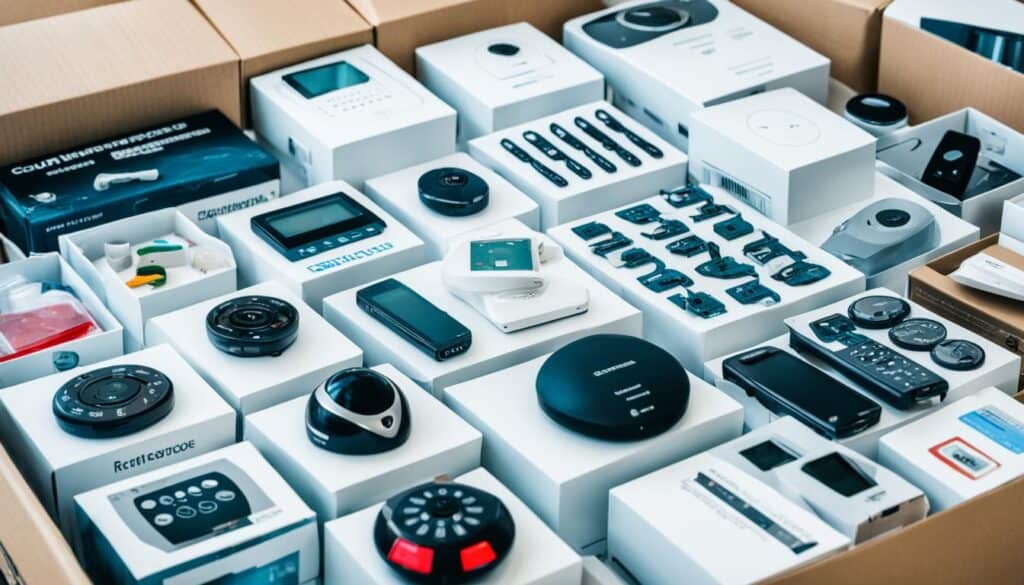
Installing a DIY home security system offers numerous benefits, making it an excellent choice for homeowners seeking affordable home protection. Here are some advantages to consider:
- Easy Installation: DIY security systems are designed for simple installation, allowing homeowners to set up their systems according to their own schedules. With user-friendly instructions and pre-programmed devices, you can easily install your system without the need for professional assistance.
- Customization: DIY systems offer the flexibility to choose the components that best suit your specific security needs. From motion sensors and contact sensors to security cameras and smart locks, you can customize your system to create a tailored solution for your home.
- Flexible Monitoring Options: With a DIY home security system, you have the freedom to choose between self-monitoring or professional monitoring services. Self-monitoring allows you to receive notifications directly to your smartphone, giving you complete control over your security. Alternatively, you can opt for professional monitoring services without long-term contracts.
- Cost Savings: One of the key advantages of DIY home security installation is the potential for significant cost savings. By eliminating the need for professional installation, you can avoid additional fees and save money without compromising on the security of your home.
- Short-Term Solution: DIY security systems are not only beneficial for homeowners, but they are also suitable for renters or those planning to move in the near future. Since DIY systems are easily installed and can be taken down without causing damage, they offer a practical short-term solution for securing your living space.
Image:
Planning Your DIY Home Security System
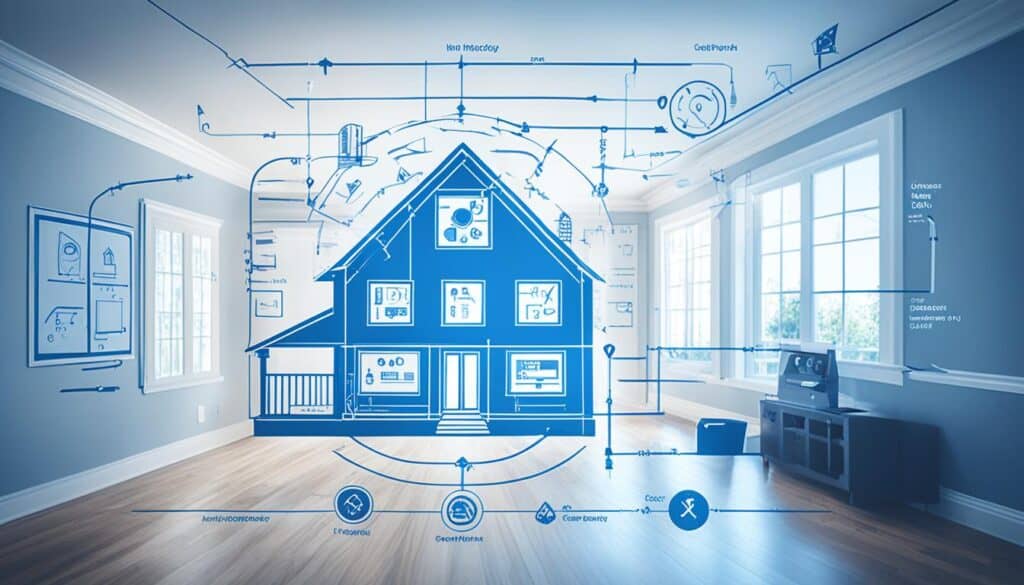
Before embarking on the installation of a DIY home security system, it is crucial to plan and assess your specific needs. Proper planning ensures that you build a comprehensive system that effectively safeguards your home and loved ones. Here are some key steps to follow:
- Identify Entry Points: Start by identifying all the entry points of your home, such as doors and windows, where you want to install sensors. These sensors will detect any unauthorized access attempts and trigger an alarm.
- Control Panel Placement: Consider the placement of the control panel. It should be easily accessible for arming and disarming the system but hidden from view to prevent tampering. Choose a location that is conveniently located yet discreet.
- Assess Exterior Lighting: Assess the exterior lighting around your home to ensure adequate illumination for security cameras. Well-lit areas discourage intruders and provide clear video footage for identification purposes. Install additional lighting if necessary to eliminate any blind spots.
- Add Additional Security Components: To further enhance your home’s security, consider incorporating additional components such as smoke detectors, glass break sensors, and flood sensors. These components provide early detection and warning of potential hazards, safeguarding your home and family.
By carefully planning your DIY home security system, you can customize it to meet your specific requirements, providing peace of mind and protection for your home.
Making Your Shopping List for a DIY Home Security System
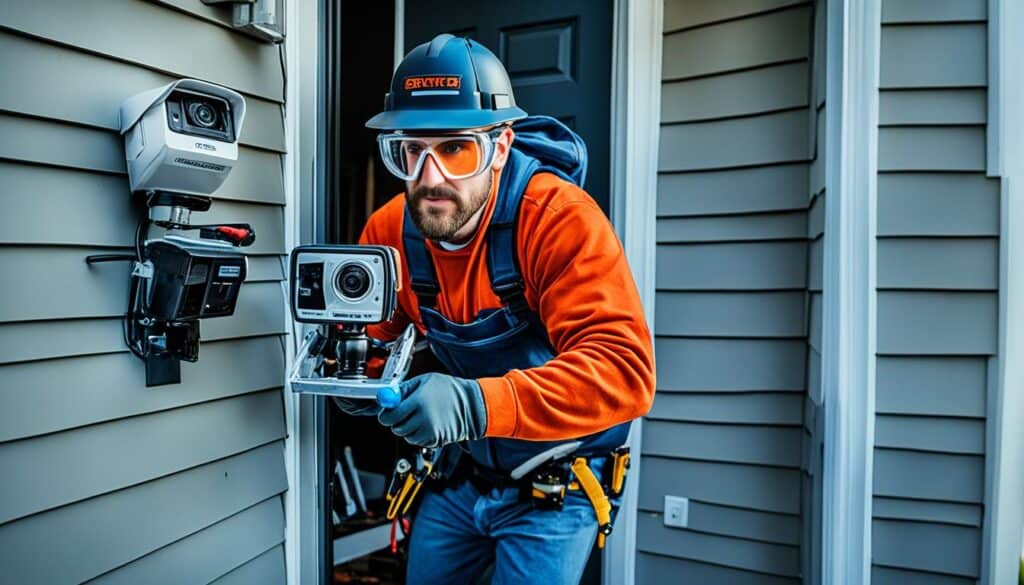
Once you have determined your home’s security needs, it’s time to create a shopping list for your DIY home security system. By selecting the right components, you can ensure affordable home protection and peace of mind. Here are some essential items to include on your shopping list:
- A base and entry keypad for easy access and control of your system.
- Door and window sensors to detect any unauthorized entry into your home.
- Motion sensors to detect movement and trigger an alarm.
- Smoke detectors to alert you to the presence of smoke or fires.
- Glass break sensors to detect the sound of breaking glass and deter potential intruders.
- Flood sensors to detect water leaks or flooding in your home.
- Security cameras to monitor and record any activity in and around your property.
- A keychain remote for convenient arming and disarming of your system.
- Yard signs and stickers to deter potential burglars by indicating your home is protected.
- A mobile app for monitoring and controlling your security system remotely.
- A smart home voice assistant for hands-free control of your security system.
- Additional smart home devices for integration with your security system, such as smart locks or smart lights.
By including these items on your shopping list, you can build an effective and affordable DIY home security system tailored to your needs. Remember to compare prices and read reviews to ensure you are getting the best value for your money.
Choosing the Right Cameras for Your DIY Home Security System
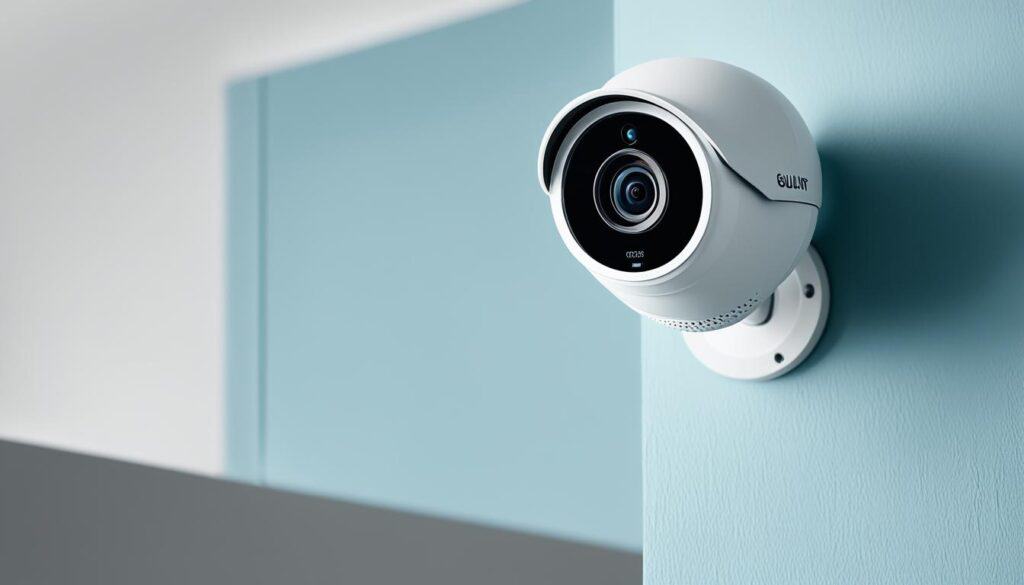
When it comes to DIY home security systems, selecting the right cameras is essential for ensuring optimal surveillance and protection. The type of cameras you choose will depend on your specific needs and preferences. Consider the following factors as you make your selection:
- Indoor Cameras: Indoor cameras are designed to monitor the interior of your home. They can be especially useful for checking on pets or family members. Look for features such as high-resolution video, night vision capabilities, and the ability to pan, tilt, or zoom.
- Outdoor Cameras: Outdoor cameras are built to withstand various weather conditions and provide surveillance for the exterior of your home. Make sure to choose weatherproof cameras that can withstand rain, snow, and extreme temperatures. Look for features such as infrared night vision, wide-angle lenses, and advanced motion detection.
- Doorbell Cameras: Doorbell cameras offer the convenience of seeing and communicating with visitors at your doorstep, no matter where you are. These cameras are typically equipped with motion sensors, night vision, and two-way audio communication. Look for models that integrate seamlessly with your DIY home security system and offer mobile app integration for real-time notifications and remote access.
By carefully considering the type of cameras you need and the features that are important to you, you can ensure that your DIY home security system provides comprehensive coverage and peace of mind.
Smart Home Integration with Your DIY Home Security System
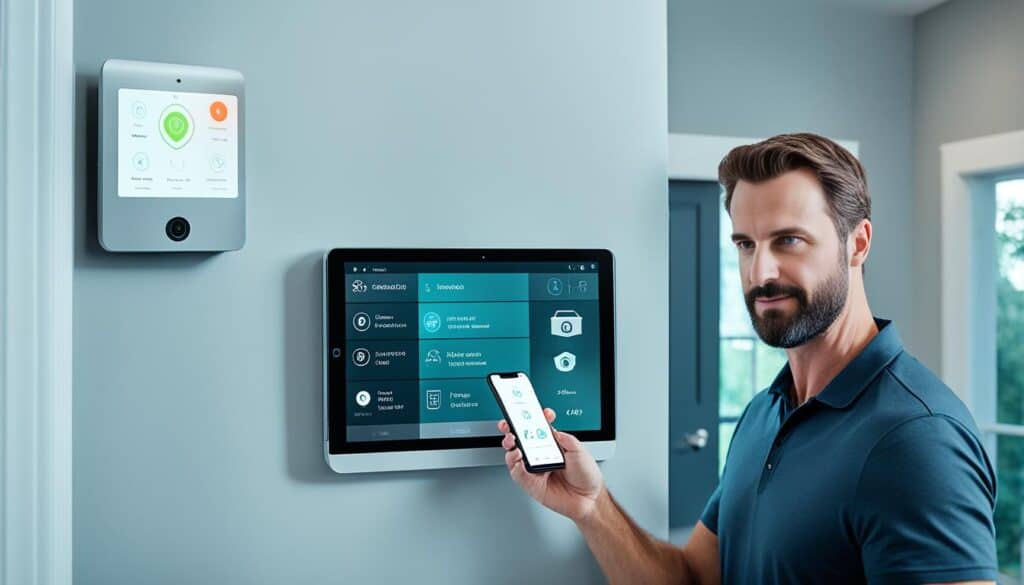
Integrating smart home devices with your DIY home security system can provide added convenience and control. By incorporating devices such as smart light bulbs, garage door controllers, smart switches, and plugs into your system, you can enhance the overall efficiency of your smart home and security system.
Connecting these devices to a central hub allows for seamless integration and control. You can remotely monitor and control your security system and other smart devices through automation or a mobile app, providing peace of mind and convenience.
For example, integrating smart light bulbs allows you to automate lighting schedules to give the appearance of someone being at home when you’re away, increasing security and deterring burglars. With garage door controllers, you can remotely open or close your garage door, providing secure access to your home. Smart switches and plugs enable you to control various devices, such as lamps or appliances, with ease.
By expanding the capabilities of your DIY home security system through smart home integration, you can create a comprehensive and personalized solution to meet your specific needs. Whether it’s enhancing the security of your home or simplifying daily routines, smart home integration adds an extra layer of convenience and control to your DIY home security system.
Benefits of Smart Home Integration with Your DIY Home Security System:
- Increase convenience and control over your home
- Automate lighting schedules for added security
- Remotely control and monitor your security system and smart devices
- Enhance the overall efficiency of your smart home
- Customize your DIY home security system to meet your specific needs
Installing Your DIY Home Security System

Now that you have all the necessary components, it’s time to install your DIY home security system. Following the provided instructions from the manufacturer, start with the base and entry keypad. This is the central control point of your system, so make sure it’s easily accessible but concealed from view to prevent tampering.
Next, proceed with the installation of door and window sensors. These sensors are crucial for detecting any unauthorized entry into your home. Place them on all entry points, such as doors and windows, ensuring they are securely fastened and aligned properly.
With motion sensors, you can add an extra layer of security by detecting any movement within your home. Install them in strategic locations where they can cover the most area, such as hallways or rooms with valuable belongings.
Don’t forget about the security cameras. These are essential for capturing visual evidence and deterring potential intruders. Place them in key areas both inside and outside your home for comprehensive surveillance. Remember to adjust the camera angles and settings to minimize blind spots and optimize coverage.
After installing each component, it’s crucial to test them individually to ensure proper functioning. Check that the sensors and cameras are communicating with the control panel, and that any smartphone or computer access to the system works as intended.
By following the manufacturer’s instructions and ensuring each component is installed correctly, you can have peace of mind knowing that your DIY home security system is ready to protect your home and loved ones.
Monitoring and Maintaining Your DIY Home Security System

Once your DIY home security system is installed, it’s crucial to establish a monitoring system to ensure its effectiveness. Whether you choose to self-monitor through a mobile app or opt for professional monitoring services, regular checks and maintenance are key. By following these DIY home security tips, you can maintain the functionality of your system and keep your home protected.
Regular System Checks
- Check all components of your DIY home security system regularly to ensure they are functioning properly.
- Verify that your door and window sensors, motion sensors, and security cameras are working as intended.
- Test the control panel and keypad to ensure they are responsive and properly connected.
Battery Replacement
Replace batteries in your sensors and cameras as needed to maintain their optimal functionality. Regularly checking the battery levels and replacing them when necessary ensures that your DIY home security system continues to provide reliable protection.
Firmware and Software Updates
Stay up to date with the latest firmware and software updates recommended by the manufacturer. These updates often address security vulnerabilities and enhance the performance of your DIY home security system. Follow the manufacturer’s instructions to update firmware or software without any delay.
Regular Testing
Periodically test your DIY home security system to ensure that it is providing the desired level of protection. This includes triggering sensors to check if the alarms are activated and verifying that the monitoring alerts are working correctly. Regular testing gives you peace of mind knowing that your system is functioning as expected.
By implementing these DIY security tips, you can confidently monitor and maintain your DIY home security system. With regular checks, battery replacements, firmware updates, and testing, you can ensure the continued effectiveness of your system in protecting your home and loved ones.
Troubleshooting Common Issues with DIY Home Security Systems
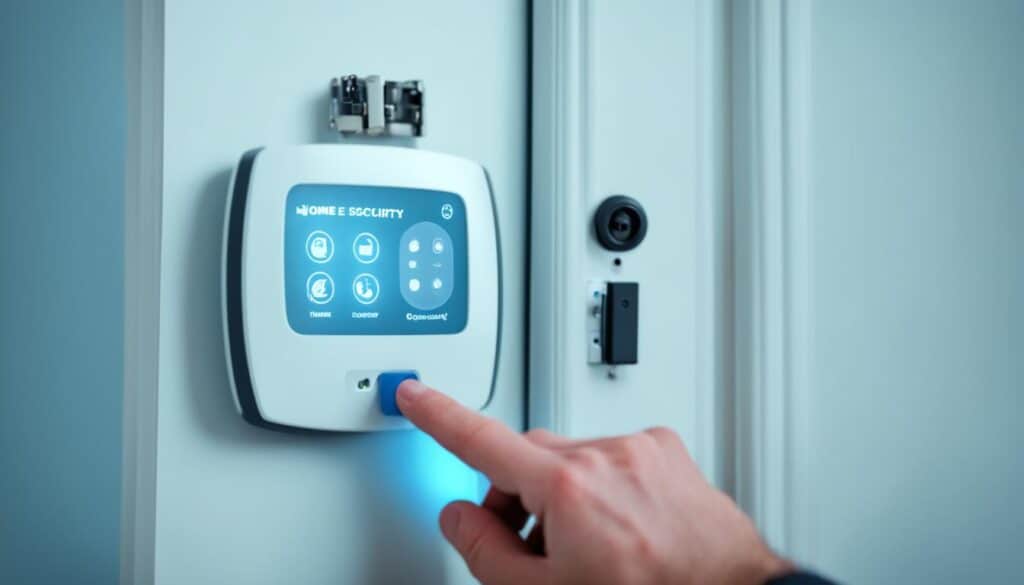
DIY home security systems can encounter common issues that may require troubleshooting. These can include connectivity issues, false alarms, or camera malfunctions. It’s essential to address these issues promptly to ensure the effectiveness of your DIY home security system and maintain affordable home protection.
To troubleshoot these problems effectively:
- Refer to the manufacturer’s troubleshooting guide. Manufacturers often provide detailed instructions on how to troubleshoot common issues with their DIY home security systems. Take the time to review the guide and follow the recommended steps to resolve the problem.
- Contact customer support. If you’re unable to resolve the issue using the troubleshooting guide or if the problem persists, reach out to customer support. They can provide further guidance or arrange for repairs or replacements if necessary.
- Regularly check system logs and notifications. Stay proactive by monitoring your DIY home security system’s logs and notifications. This helps you identify any potential issues before they escalate into major problems. Pay attention to error messages, alerts, or unusual activity that may indicate a malfunction or security breach.
By troubleshooting common issues promptly, you can ensure that your DIY home security system continues to provide the affordable home protection you need for peace of mind.
Upgrading and Expanding Your DIY Home Security System
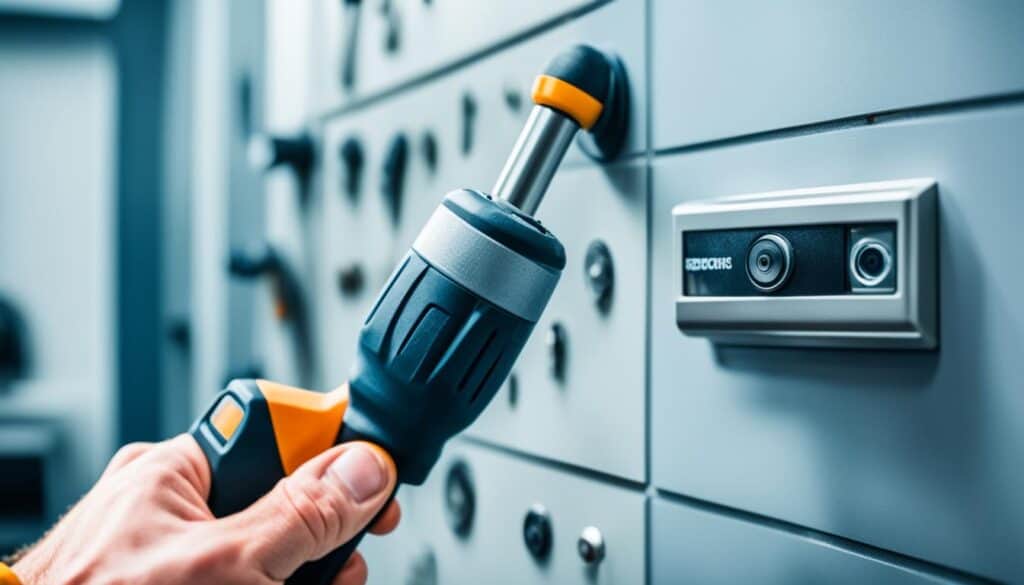
One of the benefits of a DIY home security system is the ability to upgrade and expand it as needed. As technology evolves and new security features become available, consider upgrading your system to take advantage of these advancements. Upgrading your DIY home security system allows you to enhance the overall security and convenience of your home.
There are several ways to upgrade your DIY home security system. You can start by adding additional sensors, such as motion sensors or glass-break sensors, to cover more areas of your home. This can provide an extra layer of protection and increase the effectiveness of your system.
Another option is to install additional security cameras in strategic locations around your property. This can help you monitor different areas, both indoors and outdoors, and provide you with a clearer picture of any potential security threats.
In addition to sensors and cameras, you may also consider incorporating smart home devices into your DIY home security system. These devices can be integrated with your security system to enhance automation and control. For example, you can connect smart light bulbs or plugs to your system, allowing you to remotely control your lights or appliances, creating the illusion of an occupied home even when you’re away.
When upgrading your DIY home security system, it’s important to consider compatibility between new and existing components. Ensure that any new devices or components you add are compatible with your existing system and can be seamlessly integrated.
Remember, the goal of upgrading and expanding your DIY home security system is to provide a higher level of security and peace of mind for you and your family. Evaluate your specific needs and budget to determine the most effective upgrades for your system.
Upgrading and expanding your DIY home security system allows you to stay up-to-date with the latest technology and provide a higher level of protection for your home. Whether it’s adding more sensors, installing extra cameras, or integrating smart home devices, these upgrades can enhance the security and convenience of your DIY home security system.
DIY Home Security vs. Professional Installation: Which is Right for You?
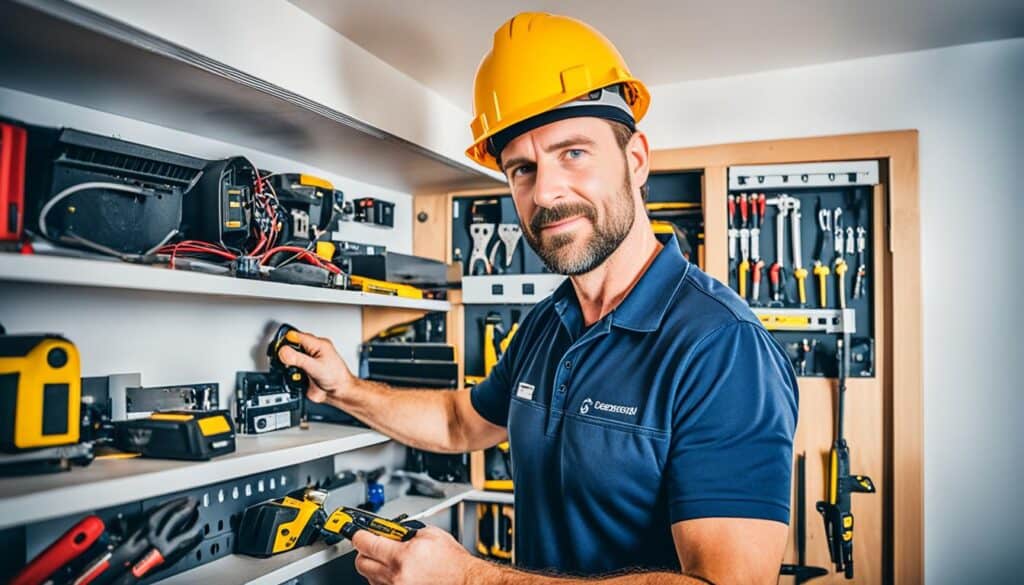
When it comes to securing your home, you have two main options: DIY home security systems or professional installation. Both choices offer their own set of advantages and considerations that you should take into account before making a decision.
DIY home security systems have gained popularity due to their flexibility, cost savings, and customization options. With a DIY system, you have control over every aspect of your security setup. You can choose the components that best fit your needs, install them yourself, and easily add or change them as necessary. This level of customization allows you to create a system that perfectly suits your home and lifestyle. DIY installation also eliminates the need to pay for professional installation, saving you money in the process.
However, it’s important to consider your comfort level with DIY projects and your technical skills before opting for a DIY home security system. If you’re not confident in your ability to install and configure the system correctly, professional installation may be a better choice. Professional installers have the expertise and experience to ensure that your system is set up properly and functioning optimally. They can also provide guidance and recommendations based on your specific security needs.
Another factor to consider is your budget. DIY home security systems are generally more affordable upfront since you don’t have to pay for installation. However, ongoing costs such as monitoring services, equipment maintenance, and upgrades should be taken into account. On the other hand, professional installation often comes with a higher upfront cost but may include additional services or warranties that can provide peace of mind.
Your personal preferences also play a significant role in deciding between DIY and professional installation. Some homeowners enjoy the satisfaction of completing a DIY project and having full control over their security system. Others prefer the convenience and assurance of having a professional handle the installation and setup.
In conclusion, choosing between a DIY home security system and professional installation depends on various factors, including your comfort level with DIY projects, technical skills, budget, and personal preferences. Consider all the pros and cons of each option before making a decision. Remember, the most important goal is to ensure the safety and protection of your home and loved ones.
The Importance of Home Security
When it comes to protecting your home, loved ones, and valuable belongings, home security should be a top priority. Fortunately, DIY home security systems offer an affordable and customizable solution that can greatly enhance your safety and peace of mind.
By following the comprehensive guide to DIY home security systems, you have the opportunity to build a system tailored specifically to your needs. From choosing the right components such as control panels, sensors, cameras, and additional devices, to planning the installation and integration with smart home technology, every step contributes to creating a robust and effective home security system.
Building your own home security system not only saves you money but also ensures that you have complete control over every aspect. You can choose the level of monitoring, whether it’s self-monitoring or professional monitoring, depending on your preferences. Plus, DIY installation allows you to customize and expand your system as your needs evolve.
Securing your home doesn’t have to be complicated or expensive. With DIY home security tips and guidance, you can enjoy the benefits of a reliable and cost-effective security system while taking proactive measures to protect what matters most to you.
 Fullersears
Fullersears
